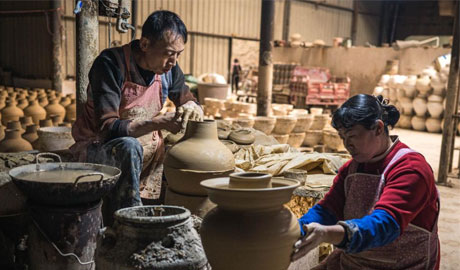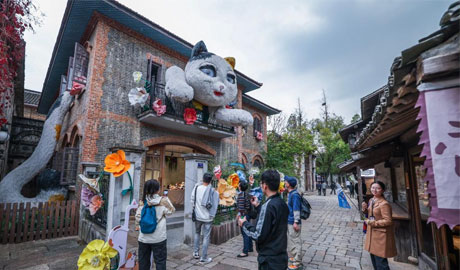

Chinese President Xi Jinping presented the Global Civilization Initiative during the CPC in Dialogue with World Political Parties High-level Meeting, emphasizing respect for civilizational diversity, promoting universal values, focusing on civilization inheritance and innovation, and strengthening international cultural and educational exchanges. This initiative prescribes a potential cure for conflict among nations by fostering cooperation and adherence to international law, albeit as a mitigation rather than a resolution. In an era marked by warfare and nuclear threats, the initiative aims to ensure the survival and continuation of humanity by fostering a stable, sustainable future through shared prosperity, underpinned by a truly multilateral global governance approach and the concept of a community of shared future for mankind.
A holistic understanding of the GCI
The development of digital technologies under China’s model of modernization has reshaped the global agenda and pushed the human society to transition from a commercial to a digital age. This shift underscores that the GCI could serve as a comprehensive correction to theories of “clash of civilizations,” “end of civilization,” and “civilizational superiority.” It also refines the concepts of civilizational dialogue, mutual learning, and shared civilization. In 2021 and 2022, Chinese President Xi Jinping introduced the Global Development Initiative and the Global Security Initiative, laying the foundation for civilizational dialogue and the promotion of a community of a shared future. These initiatives are central to Xi’s diplomatic thought and practice. In his report to the 20th National Congress of the CPC, Xi emphasized China’s steadfast commitment to maintaining world peace and promoting shared development, striving to build a community of shared future for mankind. From the “Five Principles of Peaceful Coexistence” at the founding of the People’s Republic of China to “adhering to the basic state policy of opening up” and “actively participating in the reform and construction of the global governance system,” China has consistently used its development practices to offer the world new opportunities and models for civilizational advancement. The goal of building a community of shared future guides civilizational dialogue, stressing the need for exchanges and mutual learning to collaboratively forge an open, inclusive, peaceful, cooperative, green, and low-carbon world.
The GCI represents an organic integration of the fundamental principles of Marxism with China’s specific realities and its fine traditional culture. This initiative is the latest outcome of blending Marxist theories on international interactions with Chinese traditional values of familial harmony and cooperative coexistence. Marx’s theory of interaction provides a robust basis for economic globalization and, when applied to civilizational exchanges, suggests that as human interactions expand – especially large-scale interactions between different ethnic groups and nations – there will be more global exchanges of political, cultural, educational, scientific, and military ideas. In Chinese tradition, interactions have always emphasized reciprocity, familial harmony, and good neighborliness. In the new era, China continues to adhere to a diplomatic philosophy of sincerity, amicability, and inclusiveness towards neighbors, promoting the formation of new international relations and deepening mutual trust and integrated interests with neighboring countries. The contemporary view on civilizational exchange and mutual learning is the result of thoroughly adopting, integrating, and elevating Marxist theories on human interactions, the best of Chinese traditional culture, and the Communist Party of China’s thoughts and experiences on civilizational interactions, transforming them for contemporary relevance.
The GCI encapsulates the historical experiences of diverse civilizations evolving over time. Civilizational exchange and mutual learning combine the external forces driving the progress of individual civilizations with their inherent vitality, fostering ongoing growth that nourishes others. From the city-states of ancient Greece to the unified state communities of ancient China, from primitive tribal communities to feudal, capitalist societies, and onto socialist and future communist communities, the history of these communities reflects the transformation of civilization. Correspondingly, the dialogue among civilizations has evolved from theories of civilizational clash based on the first Enlightenment to discussions of civilizational equality in the second Enlightenment, leading to exchanges and mutual learning under the new forms of human civilization.
Practicing the GCI in the new form of human civilization
Today, digital technologies enable a new form of human civilization characterized by human-machine interaction, the blending of virtual and real, and the complex intertwining of time and space. Civilizations intertwine like quantum entanglement across time and space in the historical continuum, fostering an environment of mutual learning and shared prosperity.
The implementation of the GCI emphasizes the interplay between humans and machines in global civilizational dialogue. The advancement of digital media has created favorable conditions for exchanges, making cross-cultural communication not only possible but richer and more complex. In the digital age, the dialogue participants are more diverse, and the interaction between virtual identities in cyberspace and real individuals allows for immediate and equal conversations across different races and nations, largely overcoming language and cultural barriers. On the other hand, dialogues between humans and artificial intelligence, represented by digital humans, are becoming increasingly frequent. This Lev Manovich-style human-computer interaction, involving dialogues between spiritual and material civilizations, technological and human civilizations, and industrial and digital civilizations, signifies a space where multiple civilizations coexist and interact.
Practicing the GCI under the new form of human civilization necessitates integrating physical and digital media for global dialogues. The evolution of digital media has fostered favorable conditions for such exchanges, with communication shifting from physical to virtual realms as mass communication gives way to interactive digital communication. In the digital era, the mediums of global civilization interaction will be diversified. Virtual and real societies are increasingly intertwined, media and society are co-constructed, and spaces like the metaverse are gaining popularity, underscoring the growing importance of digital civilization in human society.
In this new era, the practice of the GCI showcases the interweaving of time and space within civilizational interactions. Digital interactions have expanded the scope and depth of globalization, reducing the constraints of geographical and temporal distances. In virtual settings, traditional cultural elements like language, religion, and values are bypassed in favor of a new, shared digital culture built on computer languages, online cultures, and virtual identities. Netizens from different countries and regions, and even those from different generations and cultural backgrounds, can engage in direct dialogues in the same digital space. Digital technology provides the convenience and freedom to facilitate civilizational interactions across different times and spaces. The global community's approaches to these changes will determine the success of these dialogues. In practicing global dialogues towards building a community of shared future, recognizing civilizational diversity is essential, pursuing common values provides motivation, and promoting the innovative development and transformation of civilizations are the goals. Strengthening cultural exchanges and accelerating the formation of civilizational dialogue network are therefore essential pathways. From this perspective, actively implementing the GCI calls for summarizing China's modernization experiences, exploring integrated online and offline strategies, and fostering multi-dimensional interactions among ecology, culture, capital, and technology. The approach involves establishing regular and specialized global civilization dialogue mechanisms based on collaborative platforms, using culture as a medium to construct a global dialogue, leveraging collaborative projects to solidify the economic foundation of these dialogues, and improving civilizational dialogue with innovative technological platforms.
(Author: Zhang Suqiu, Associate Professor at the Institute for a Community with Shared Future, Communication University of China)

Xinjiang launches consumption voucher program to boost winter tourism

Liaohu Village of China's Yunnan boasts thousand-year pottery-making tradition

Yading scenic spot in China's Sichuan in best viewing season

Internet life carnival kicks off in Tongxiang City, China's Zhejiang

In pics: drifting ice in Jiayin section of China's Heilongjiang River
点击右上角![]() 微信好友
微信好友
 朋友圈
朋友圈

请使用浏览器分享功能进行分享
